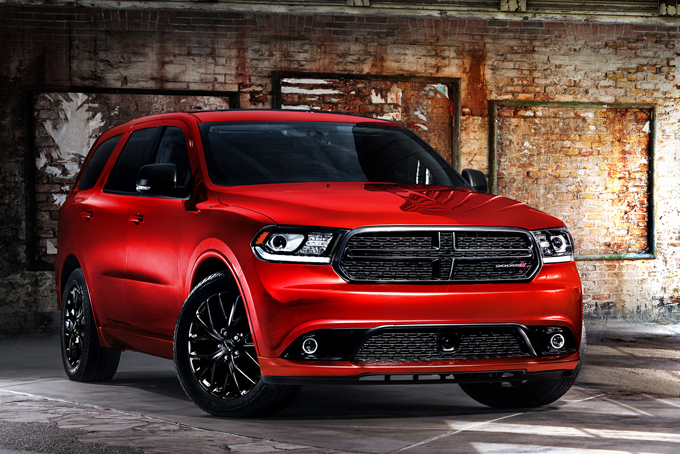
CHICAGO – We drove a 2015 Dodge Durango here from Detroit and navigated around the Windy City for about 10 days.
There was some apprehension, not with the Durango but with fuel consumption. Our tester was powered by a 5.7-liter V8 HEMI and immediately the price of gasoline during a 10 day-stay came to mind. After all, this HEMI made 360 horsepower, 390 pound-feet of torque and the Durango was all-wheel-drive.
However, the engine was mated to an eight-speed automatic transmission, it had what the company called fuel saver technology, only four of the eight-cylinders would operate when less power was needed, and the all-wheel-drive system was rear-wheel-drive based. That helped handling and performance.
Our R/T model had a sport-tuned suspension but it wasn’t harsh. We barely noticed any bumps or sways on the way here or after we arrived. And the truck-like ride of some full-size sport utilities was nonexistent on Interstate 94 as well as the surface streets and expressways here. The Durango tracked true; we never had to adjust the steering wheel to keep it in place.
It had what is quickly becoming old-fashioned rack and pinion steering that was hydraulic, not electric. Hydraulic steering gave us a much better connection to the road. The front suspension was a short and long armed affair with coil springs, as well as gas-charged, twin tube shock absorbers. And in the rear, the suspension was multi-link with coil springs, twin tube shocks and an aluminum lower control arm.
What’s more, fuel consumption was not bad – for a V8. Our Durango had an EPA rating of 14 mpg in the city and 22 mpg on the highway. In real world driving, we added about 1,000 city and interstate miles to the odometer of the test vehicle and gassed up four times; that included a full tank when the vehicle was delivered. Out of pocket fuel cost was less than $100; that is pretty affordable for a 10-day trip that involved a lot of daily driving.
The Durango was a three-rowed sport utility. We folded the third row and loaded two duffle bags onto the flat cargo floor and tossed in a second jacket for good measure. The 17.2 cu. ft. of storage space with those third row seats folded just swallowed the bags and we could have stored a couple more.
Dodge’s large sport utility has always had a muscular look but it has been contemporized. Our test vehicle had LED daytime running lights and Xenon headlights. Dodge said the front lights had leveling technology that would adjust for “slight” changes in elevation.
We had the R/T model and it featured body colored front and rear lower fascias, wheel flares, a revamped horse collar grille and sill moldings. The R/T’s ride height was lowered 20 mm and it featured 20-inch aluminum wheels.
In the rear, the Durango had Dodge’s LED “racetrack” taillight design that is also on the Charger and the Dart. It is a seamless ribbon of light. Large dual exhaust tips were standard on our V8 powered Durango. It looked racy, even in winter which is when we test drove it.
Dodge has done a nice job upgrading the interiors of all of its vehicles. The Durango featured a dial gear selector that created a clean look and a lot of space on the center console that was not there before.
There was a leather interior with French stitching and an 8.4-inch touch screen. Our test vehicle had the latest version of Uconnect; there was an SD card slot, a USB outlet and auxiliary jacks. Heated seats and a heated steering wheel were much appreciated during what we thought was the last arctic blast of winter.
There was a 7-inch TFT screen between the odometer and the speedometer. Dodge said it could be customized more than 100 ways to give the driver information.
We spent our time using the Durango’s Wi-Fi hotspot with the Uconnect app to play Pandora off of our smartphone. It was a little slow responding or switching stations but it was a more customizable alternative to the vehicle’s satellite radio.
Our test Durango was a good ride. It had a quality interior, stylish exterior, it was practical in terms of cargo area and seating adaptability; during white outs on the drive back the all-wheel-drive system gave a measure of security and the sticker was reasonable.
Base priced at $42,195, with options including a rear-seat entertainment system, a USB charging port, Uconnect with satellite radio and the navigation system, the total for our test vehicle came to $48,170.
Frank S. Washington is editor of AboutThatCar.com.